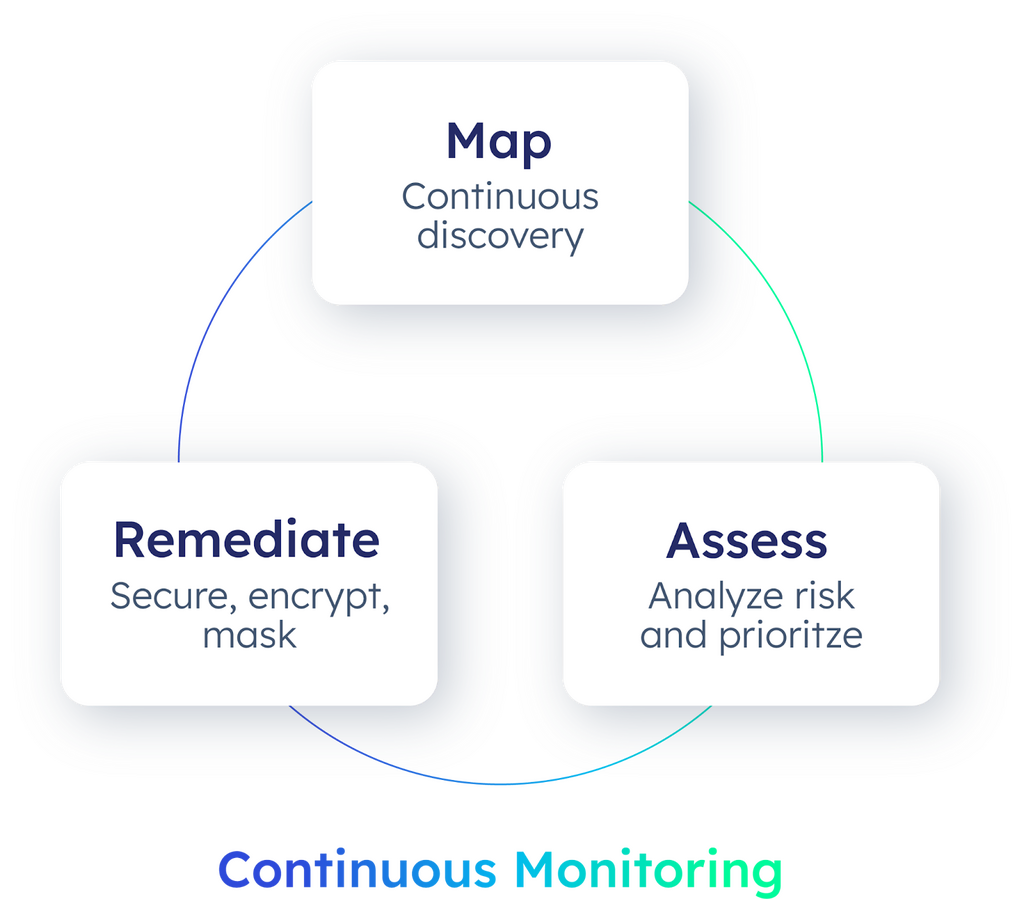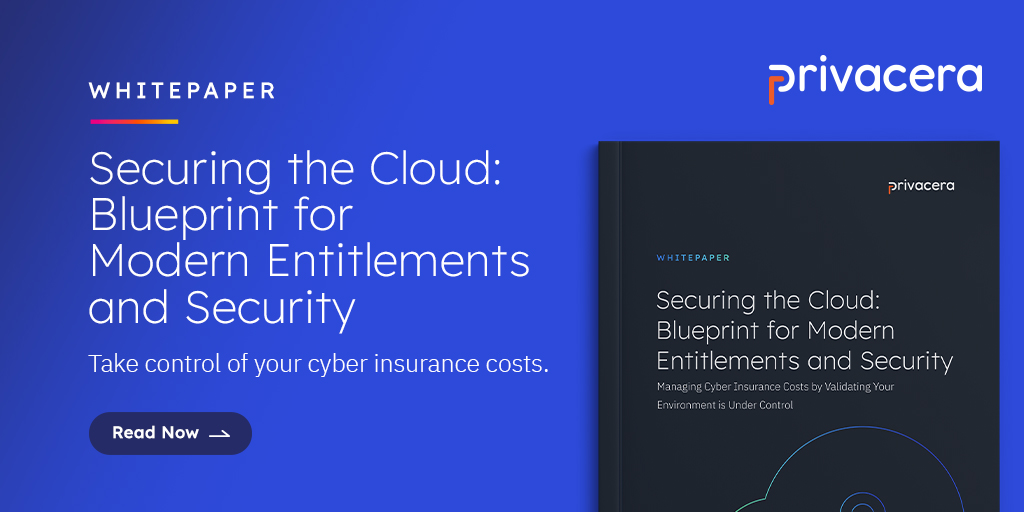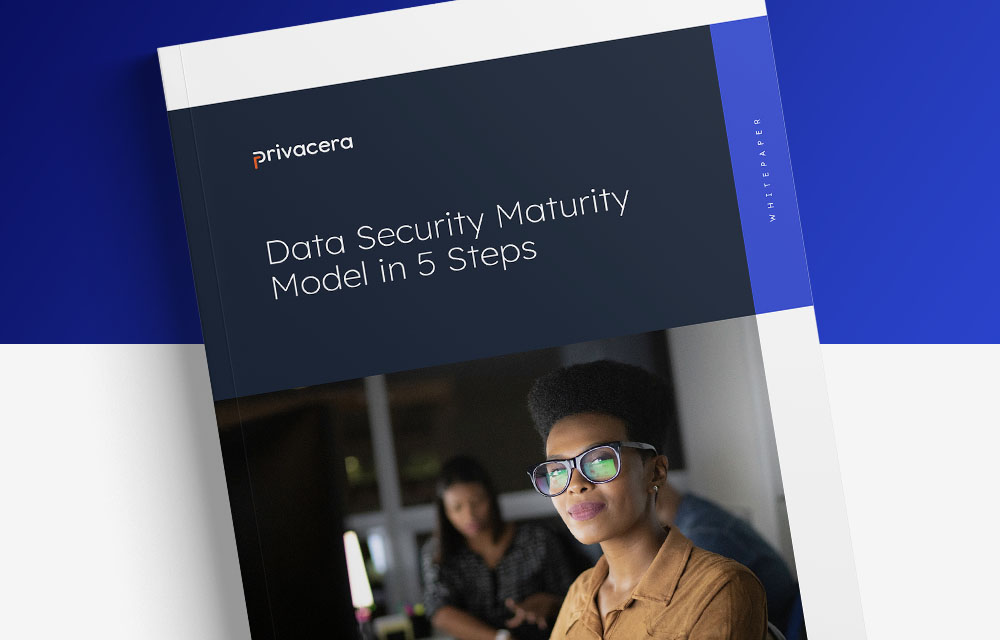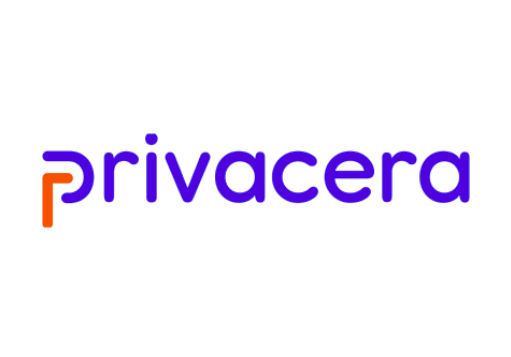In today’s data-driven world, effective data governance is paramount. As Bob Seiner aptly points out, it hinges on accountability, communication, and cross-organizational stewardship. For data security, this means safeguarding sensitive information from unauthorized access, loss, and theft throughout its lifecycle.
Privacera’s comprehensive solution addresses these critical needs systematically. By discovering, classifying, and tagging sensitive data, Privacera’s platform provides a granular understanding of its location and value. Risk assessment capabilities ensure that data security measures align with evolving threats, while automated compliance workflows streamline the management of access controls. Let’s review how this works at a healthcare payer.

Implementation at the Healthcare Payer
Map/Discovery
Privacera’s data discovery and classification capabilities play a pivotal role in assessing risk and ensuring comprehensive governance for this healthcare customer. By automating the identification and categorization of sensitive data like PII and PHI, this organization can efficiently identify and protect critical information across diverse data environments, including legacy systems and modern platforms.
The ability to connect to legacy systems was particularly valuable for this healthcare provider, as many components of the healthcare system rely on older technologies. Privacera’s connectors enabled seamless integration to these components, ensuring that no sensitive data was overlooked. For example, the organization was able to successfully identify and classify PHI stored within its claims system using both manual data mapping and automated discovery techniques.
Data tagging was another crucial portion of their implementation. By enriching data with metadata tags, the customer gained valuable context and enhanced its ability to enforce compliance and governance initiatives. Tags were applied to data assets, enabling the organization to differentiate between datasets and implement appropriate access controls and policies.
Data Access Policy Definition
Privacera empowered the customer to establish a centralized platform for defining and managing data access policies. This enabled the creation of granular control over data access, ensuring compliance with HIPAA, organizational policies, and other industry regulations.
In this approach row-level access control and dynamic data masking were deployed to protect sensitive information. Privacera’s integration with platforms like Snowflake allowed this organization to implement these techniques, safeguarding data at a granular level, and prevent unauthorized disclosure.
Data masking techniques, such as obfuscating patient social security numbers, ensured that sensitive information is protected while enabling legitimate data sharing for analysis. Dynamic masking rules further enhance security by tailoring data exposure based on user roles and context. This ensures that only authorized individuals have access to the necessary data.
Encryption is another critical aspect of the customer’s data security. Privacera enabled them to apply robust encryption capabilities that protect data both at rest and in transit, safeguarding sensitive healthcare information from breaches and unauthorized access. This was essential to their compliance with regulations like HIPAA and helped them maintain patient privacy.
By leveraging Privacera’s comprehensive platform, this organization could effectively manage sensitive patient data, achieve regulatory compliance, and enhance data-driven decision-making while prioritizing privacy and security.
User Authentication and Access
Privacera’s ability to integrate with the customers existing Identity Providers (IDPs) was used to bolster data security and streamline user access. By enforcing strong authentication mechanisms like Multi-Factor Authentication (MFA) and Single Sign-On (SSO), Privacera ensured that only authorized individuals can access sensitive healthcare data.
MFA provided for this customer an extra layer of protection by requiring users to verify their identity with multiple forms of authentication. SSO, on the other hand, simplifies the login process for healthcare professionals by allowing them to use a single set of credentials to access multiple systems. These features collectively contribute to a more secure and efficient data access environment.
Comprehensive Auditing and Monitoring
Privacera’s robust auditing and monitoring capabilities provide this healthcare payer with a comprehensive view of data access and usage across their entire data estate. This enabled them to identify potential security breaches, track compliance with regulations like HIPAA, and continuously improve their data governance practices.
By auditing user behavior, the customer could detect anomalous activities that indicated unauthorized access or potential threats. For example, repeated attempts to access unauthorized data could be used to flag and investigate. Additionally, Privacera’s detailed audit logs and reports offered valuable insights into data access and usage, facilitating compliance with regulations.
Data governance is an ongoing process, and Privacera’s flexible platform supports continuous improvement. Organizations can regularly review and update access policies to ensure they align with evolving regulations and security practices. Moreover, Privacera’s adaptability to emerging technologies empowered the organization to integrate with new solutions and refine their data and analytical governance strategies.
Key Considerations for Implementing Privacera in Healthcare
For our customer, successful implementation of Privacera required careful planning and collaboration. It was critical to involve key stakeholders, including security teams, compliance officers, data analysts, and business leaders, to ensure that the solution aligns with their specific governance needs.
Additionally, for the customer, customization and configuration were essential for tailoring Privacera to the organization’s unique requirements. Seamless integration with existing systems, such as EHRs and data warehouses, was crucial to maximizing its implementation effectiveness. Finally, adequate training and support for users and administrators ensured that the solution is used correctly and efficiently.
Parting Words
Privacera offered a comprehensive solution for this healthcare payer to manage data security governance end-to-end. By implementing robust data discovery, classification, access controls, encryption, and auditing capabilities, the organization could effectively safeguard sensitive patient data, comply with regulations like HIPAA, and enhance data-driven decision-making. Key considerations for implementation include stakeholder collaboration, customization, integration, and training. With Privacera, the healthcare payer established a strong foundation for data security and privacy.





